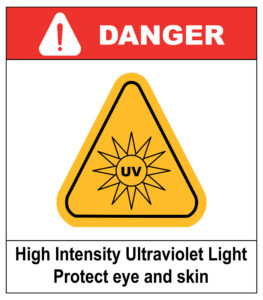Understanding Hazards – Radiation

Ionising radiations
Ionising radiations occur as electromagnetic rays (for example, x-rays and gamma rays) or as particles (for example, alpha and beta particles). Radiation happens naturally from the radioactive decay of natural radioactive substances (for example, radon gas and its decay products) but can also be produced artificially.
Exposure to ionising radiation can lead to conditions such as:
• Dermatitis
• Skin burns
• Cell damage
• Cancer
• Cataracts
• Changes to blood
It’s important to manage the risks of ionising radiation sensibly to protect workers and the public.
Non-ionising radiation
These are from the part of the electromagnetic spectrum covering two main regions: optical radiation (for example, ultraviolet, visible and infrared) and electromagnetic fields (for example, power frequencies, microwaves and radio frequencies).
Exposure to non-ionising radiation can cause:
• skin burns
• cancer
• cataracts
• conjunctivitis
• arc eye
Duty holders are required to:
• Identify all sources of ionising and non-ionising radiation in their workplaces
• Reduce any exposure to ionising and UV radiation, as far as possible
• Consider getting competent advice
• Introduce a medical health surveillance programme
• Provide appropriate shielding and personal protective equipment
• Seek expert advice when lasers are used for displays.
